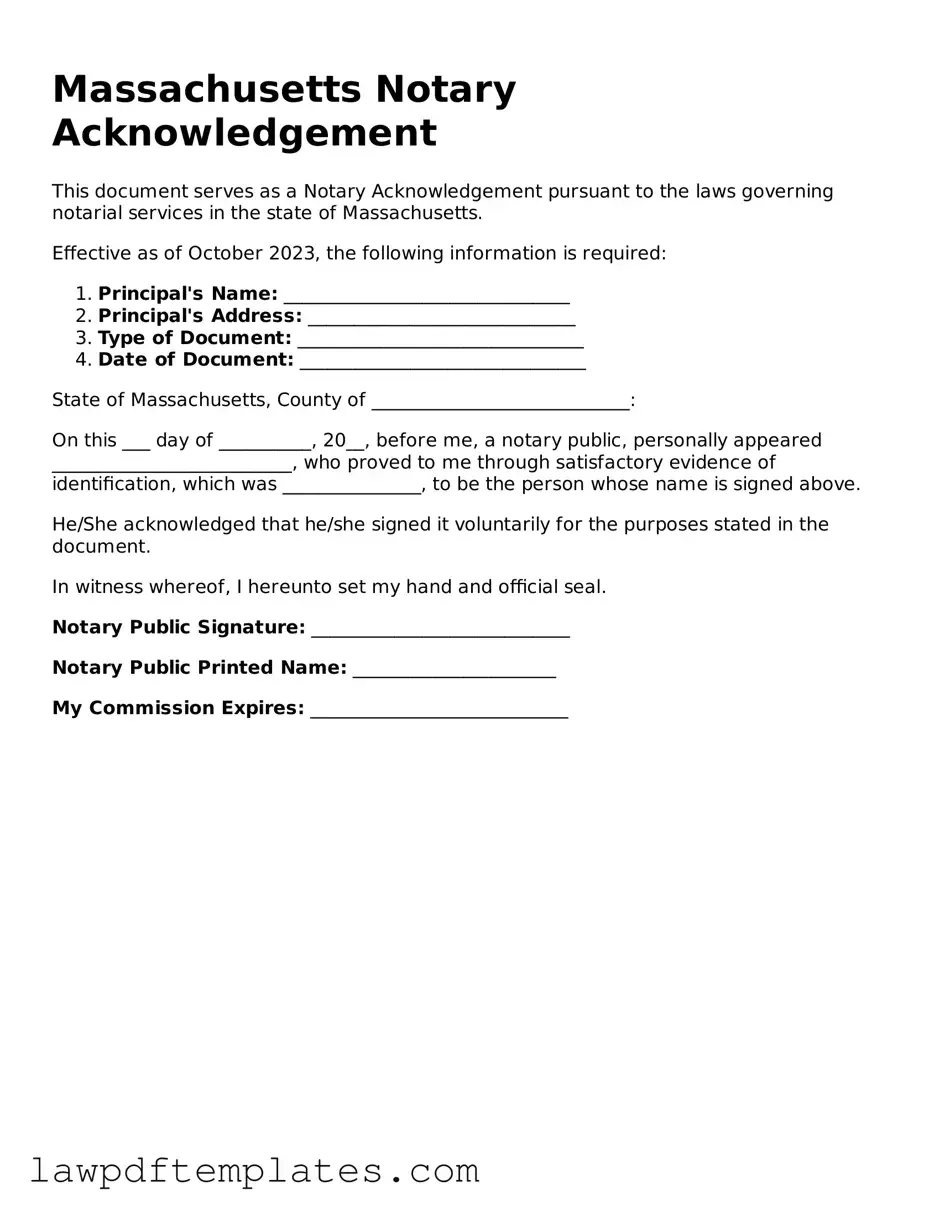Free Notary Acknowledgement Template for the State of Massachusetts
The Massachusetts Notary Acknowledgement form serves as a vital document that verifies the identity of individuals signing important papers. This form ensures that signatures are authentic and that the signers are willingly entering into agreements. Understanding its significance can streamline your legal processes and provide peace of mind.
Ready to get started? Fill out the form by clicking the button below.
Get My Notary Acknowledgement
